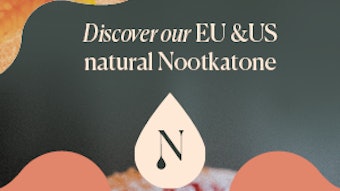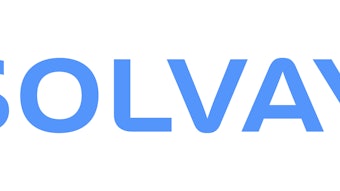The timeline highlights important events in the F&F industry starting with the 1900s through to present day. Also included amidst the timeline are interviews with and profiles of key industry organizations—ASP, SFC, BSF, IFEAT, FMA, RIFM, FMA, IFRA. Included here is the introduction to the timeline with the specific history of P&F magazine:
“That’s What We Do”: Keeping the F&F Industry Linked
The Allured family has been in the publishing business since 1921, when Earl R. Allured debuted a confectionery industry magazine from his offices in the Chicago Stock Exchange building. In 1949, Earl’s son, Stanley E. Allured, joined the business. It was Stanley who, following the family’s acquisition of the publication in 1960, assumed the management of Perfumer & Flavorist magazine precursor The American Perfumer. Throughout the years, Allured Publishing has been operated by various members of the family, including Stanley’s wife, Betty Lou; their three daughters—Nancy, Jean and Janet; and several grandchildren, including Jeb Gleason-Allured, Perfumer & Flavorist magazine's current editor.
To this day, at meetings and symposia, people always ask, “How’s Stan?” And with good reason. Allured traveled extensively throughout his 40-plus-year career in the F&F industry, from Japan to Turkey to virtually every corner of Europe, leaving in his wake a trail of good friends and respected colleagues. (For many years, Allured was both the editorial and ad sales head for both the cosmetics and F&F industries—an amazing juggling feat.)
“I started going to some perfumery and flavor chemists’ meetings [in 1960],” Allured recalls. “But those were very restricted. Only some were open. Most were members-only. But then I started publishing lots of news about those societies, and they decided, ‘Hey, we’ve got to have him at every meeting.’ Of course, I wasn’t eligible for membership, but they gave me an honorary membership.”
When Allured thinks back on how the industry has evolved, he evokes the perfume business as it was when he first became involved: “It was not a scientific business [back then],” says Allured. “It was a creative business.” In fact, he adds, many perfumers believed that advanced chemistry degrees actually could ruin creativity—a notion that may not be entirely lost today.
According to Allured, the force that truly changed everything was “the huge growth in use of perfume by Procter & Gamble, Colgate, Lever Brothers, Dial—the soaps, detergents, etc. [These companies] became bigger customers than Chanel, Avon and Revlon. Perfume companies sold far more tonnage of fragrances for household products.” The shift in the industry presented a handicap to traditionalist/nontechnical perfumers, forever changing the nature of the business.
The other major shift in the perfume world was the introduction of synthetics. “Nontechnical perfumers loved the chemicals, but they didn’t know how to use them,” Allured notes. “To a chemist it was very simple. A technical degree and a scientific degree became much more important.”
Perfumer & Flavorist was spun off in 1976 to provide a voice for the F&F industry. One of the first features was an updated GRAS listing titled “Reference List of Flavoring Substances in Use in the United States,” an early precursor to Allured’s Flavor and Fragrance Materials (FFM).
Of course, the style and nature of the publication have changed over time. “We put more emphasis on personal news in the early days,” says Allured, alluding to the birth, marriage, travel and death announcements that once filled the news section. As Allured says, “Everyone [in the industries] knew each other, but they almost never got to see each other.” Because information moved so slowly, it was important that the magazine keep everyone up to date on the lives of their colleagues—in a way, The American Perfumer was a virtual grapevine along which business, gossip and personal asides traveled. Yet, even in today’s information age, P&F magazine continues to keep the industry connected.
“There has to be a link,” says Allured. “That’s what we do.”









